Best MySQL Books to Buy in October 2025
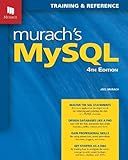
Murach's MySQL (4th Edition)


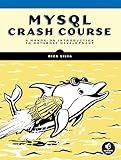
MySQL Crash Course: A Hands-on Introduction to Database Development


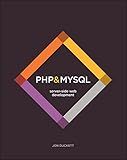
PHP & MySQL: Server-side Web Development


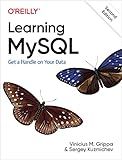
Learning MySQL: Get a Handle on Your Data



PHP and MySQL: The Comprehensive Guide to Server-Side Web Development with PHP 8 – Build Dynamic Websites with Database Integration, Security, and More (Rheinwerk Computing)


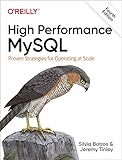
High Performance MySQL: Proven Strategies for Operating at Scale


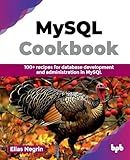
MySQL Cookbook: 100+ recipes for database development and administration in MySQL (English Edition)



MySQL Commands Cheat Sheet Reference Guide – Beginner to Advanced | Essential MySQL Commands for Database Management


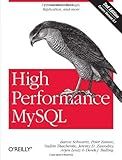
High Performance MySQL: Optimization, Backups, Replication, and More
- AFFORDABLE PRICES ON QUALITY USED BOOKS FOR SAVVY READERS!
- ECO-FRIENDLY CHOICE: REDUCE WASTE BY REUSING GREAT READS!
- FAST SHIPPING ENSURES YOUR NEXT ADVENTURE ARRIVES QUICKLY!


The WHERE clause is a crucial component in MySQL queries as it allows you to filter the data that you retrieve from the database based on specific conditions. It enables you to specify search conditions to restrict the rows returned in a SELECT statement.
To use the WHERE clause in MySQL, you need to follow the syntax:
SELECT column1, column2, ... FROM table WHERE condition;
Here, the SELECT statement retrieves data from the specified columns in the table, and the WHERE clause is used to define the condition based on which the data is filtered.
The condition in the WHERE clause can be constructed using various comparison operators such as "=", "<>", "<", ">", "<=", ">=" to compare a column value with an expression or another column value. Multiple conditions can also be combined using logical operators like AND, OR, and NOT.
For example, to retrieve all rows from a table called "users" where the age is greater than 30, the query would be:
SELECT * FROM users WHERE age > 30;
Alternatively, you can use the LIKE operator to perform pattern matching on string values. The % wildcard character can be used to match any sequence of characters, and the _ wildcard matches any single character.
To illustrate, if you wanted to retrieve all rows from a table called "products" where the product name starts with "A", the query would be:
SELECT * FROM products WHERE product_name LIKE 'A%';
In addition to these basic comparisons and pattern matching, the WHERE clause also supports other advanced features like using IN operator, BETWEEN operator, IS NULL or IS NOT NULL conditions, and more.
Using the WHERE clause effectively allows you to extract specific data from large databases, making your queries more targeted and efficient.
What is the maximum number of conditions that can be used in a single WHERE clause in MySQL?
In MySQL, the maximum number of conditions that can be used in a single WHERE clause depends on the version of MySQL being used.
Before MySQL version 5.7.3, there was a limit of 61 individual conditions in a WHERE clause.
From MySQL version 5.7.3, this limit was removed and there is theoretically no hard limit on the number of conditions that can be used in a WHERE clause. However, there may be practical performance limitations depending on factors such as the complexity of the conditions and the available system resources.
What is the significance of the WHERE clause when retrieving data from a MySQL database?
The WHERE clause is a crucial component of a SQL SELECT statement when retrieving data from a MySQL database. It allows users to filter and retrieve only those records that meet specific conditions or criteria. Without the WHERE clause, a SELECT statement would retrieve all rows from a table, which may not be desired or efficient.
The significance of the WHERE clause can be summarized as follows:
- Filtering Data: The WHERE clause allows users to specify conditions that the selected rows must meet. This enables the retrieval of specific data subsets based on criteria such as matching values, ranges, or comparisons.
- Data Integrity: By applying conditions in the WHERE clause, users can ensure that only valid and relevant data is retrieved from the database. It helps eliminate irrelevant or incorrect data, ensuring data integrity.
- Performance Optimization: The WHERE clause helps optimize query performance by reducing the number of database operations required. By filtering out unnecessary data early in the query process, it minimizes the amount of data processed, resulting in faster and more efficient queries.
- Complex Queries: The WHERE clause allows the use of logical operators (such as AND, OR) and functions, making it possible to construct complex queries. It facilitates combining multiple conditions to retrieve data that matches specific criteria.
In summary, the WHERE clause offers the flexibility to extract precisely the data needed from a MySQL database, ensuring data integrity and optimizing query performance.
How to use the WHERE clause with joins in MySQL?
To use the WHERE clause with joins in MySQL, you can follow these steps:
- Start by writing the SELECT statement and specify the columns you want to retrieve from the tables involved in the join. For example, SELECT column1, column2 FROM table1 JOIN table2 ON table1.columnX = table2.columnY.
- Specify the tables you want to join using the JOIN keyword. For example, FROM table1 JOIN table2. Note that you need to specify the join condition using the ON keyword, which specifies how the tables are related.
- Add the WHERE clause after the join statements. This allows you to filter the result set based on conditions. For example, WHERE table1.columnZ = value.
- Add any additional conditions to the WHERE clause using logical operators such as AND or OR. For example, WHERE table1.columnZ = value AND table2.columnW = value2.
Here's an example of a complete query using the WHERE clause with joins:
SELECT table1.column1, table2.column2 FROM table1 JOIN table2 ON table1.columnX = table2.columnY WHERE table1.columnZ = value AND table2.columnW = value2;
Remember to replace table1, table2, column1, column2, columnX, columnY, columnZ, columnW, value, and value2 with your actual table and column names, and the desired values you want to filter on.
How to use the WHERE clause with special characters and escape sequences in MySQL?
To use the WHERE clause with special characters and escape sequences in MySQL, you can follow these steps:
- Identify the special character or escape sequence you want to include in your WHERE clause.
- Use the backslash () character to escape the special character or escape sequence.
- Place the escaped special character or escape sequence within quotation marks or use in any comparison operation.
For example, suppose you want to search for a string that contains a single quote (') character using the WHERE clause. Here's how you would do it:
SELECT * FROM table_name WHERE column_name LIKE '%\'%';
In this example, the backslash () is used to escape the single quote within the string. The percent (%) symbol is used as a wildcard to match any characters before and after the single quote.
Similarly, you can use backslashes to escape other special characters such as double quotes ("), backslashes (\), and line breaks (\n).
Note that different programming languages and frameworks may have their own ways of handling escape sequences. Make sure to consult the documentation specific to your environment when working with special characters and escape sequences in conjunction with MySQL.
What are the wildcard characters that can be used with the WHERE clause in MySQL?
In MySQL, the wildcard characters that can be used with the WHERE clause are:
- % (percent sign): It represents zero, one, or multiple characters in a string. For example, "WHERE name LIKE 'Jo%' " will match all names starting with "Jo".
- _ (underscore): It represents a single character in a string. For example, "WHERE name LIKE 'Joh_' " will match names like "John", "Josh", etc.
- [] (square brackets): It represents a range of characters within the brackets. For example, "WHERE name LIKE '[A-C]ohn' " will match names like "Aohn", "Bohn", "Cohn", etc.
- [^] (caret within square brackets): It represents any character not in the specified range. For example, "WHERE name LIKE '[^A-C]ohn' " will exclude names like "Aohn", "Bohn", "Cohn", etc.
Note: Wildcards can be used with the LIKE operator in the WHERE clause for pattern matching in MySQL.
How to use the WHERE clause with string values in MySQL?
To use the WHERE clause with string values in MySQL, you can follow these steps:
- Start by writing a basic query that selects the records from a table. For example:
SELECT * FROM tablename;
- To only select records that meet a specific condition, add the WHERE clause after the table name. In this case, we will use a string value condition. For example:
SELECT * FROM tablename WHERE columnname = 'stringvalue';
Replace tablename with the name of your table and columnname with the name of the column you want to check against.
- Within the condition, use single quotation marks (') around the string value you want to check. This ensures that MySQL recognizes it as a string.
Here are a few examples of different string value conditions using the WHERE clause:
- To select records where a specific column equals a string value:
SELECT * FROM tablename WHERE columnname = 'stringvalue';
- To select records where a specific column contains a certain string:
SELECT * FROM tablename WHERE columnname LIKE '%stringvalue%';
Replace %stringvalue% with the string you are searching for. The % symbol is used as a wildcard to match any characters before or after the string.
- To select records where a specific column starts with a certain string:
SELECT * FROM tablename WHERE columnname LIKE 'stringvalue%';
Replace stringvalue% with the string you are searching for.
- To select records where a specific column ends with a certain string:
SELECT * FROM tablename WHERE columnname LIKE '%stringvalue';
Replace %stringvalue with the string you are searching for.
By using the WHERE clause with string values in MySQL, you can filter and retrieve records based on specific conditions.
How to use the WHERE clause to update specific records in MySQL?
To use the WHERE clause to update specific records in MySQL, you can follow these steps:
- Start by writing the UPDATE statement with the table name and SET keyword, which indicates the columns that you want to update. For example: UPDATE table_name SET column1 = value1, column2 = value2, ...
- After the SET keyword, specify the columns and their new values that you want to update. Separate each column and its value with a comma.
- Add the WHERE clause to specify the condition that filters the records you want to update. This condition is used to determine which records should be updated. For example, if you want to update records where the column "id" is equal to 10, you would include the following after SET: WHERE id = 10 You can also combine multiple conditions using logical operators such as AND and OR.
- Execute the UPDATE statement to update the specific records that match the condition specified in the WHERE clause.
Here's an example that updates the "status" column to "completed" for records having "id" equal to 10:
UPDATE tasks SET status = 'completed' WHERE id = 10;
This query will update the "status" column to "completed" only for the record(s) that have an "id" equal to 10.
